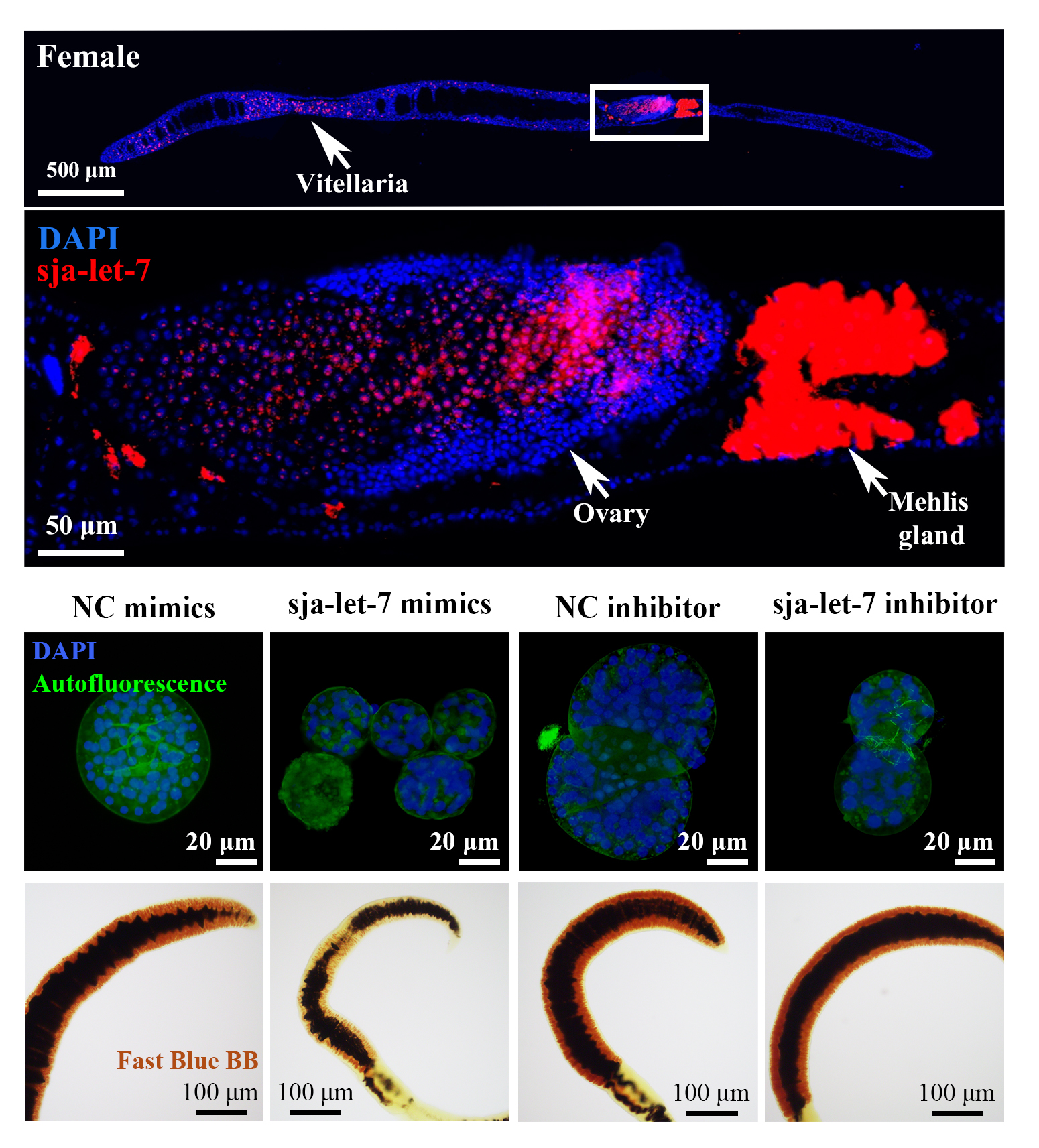
Recently, SHVRI CAAS, elucidated the functional role of the conserved microRNA sja-let-7 in regulating vitelline gland development and egg production in female Schistosoma japonicum. The findings were published in Acta Tropica.
Research Background
The reproductive development and egg-laying capacity of female S. japonicum directly determine its pathogenicity and transmission potential. In recent years, microRNAs (miRNAs), a class of non-coding RNAs critical for regulating development and cell differentiation, have attracted growing attention. Among them, the let-7 family is one of the most evolutionarily conserved miRNA families. However, its regulatory function in the reproductive development of S. japonicum females has not been systematically studied.
Research Progress
The study analyzed the expression profile of sja-let-7 across different developmental stages and sexes of the parasite, revealing its enriched expression in key female reproductive organs such as the ovary, Mehlis' gland, and vitelline gland. Through miRNA target gene prediction and fluorescence in situ hybridization, the researchers identified Sjcdc23, a cell division cycle protein, as a potential target gene of sja-let-7. Sjcdc23 was found to be highly expressed in the vitelline gland and co-localized with sja-let-7. By treating female worms with mimics or inhibitors of sja-let-7 both in vivo and in vitro, the study demonstrated that dysregulation of sja-let-7 leads to a reduced number of eggs and abnormal egg structure. These findings suggest that the homeostasis of sja-let-7 is essential for normal egg production in female worms. This research not only provides a new molecular target for understanding the developmental biology of schistosomes but also lays a theoretical foundation for developing novel strategies to interfere with egg formation and reduce the pathogenicity of the parasite.

Funding
Haoran Zhong, Assistant Researcher from SHVRI, is the first author of the paper, and Yamei Jin, Researcher of SHVRI, is the corresponding author. This study was supported by the Shanghai Sailing Program and the Agricultural Science and Technology Innovation Program of CAAS.
Original Link
https://www.sciencedirect.com/science/article/pii/S0001706X25001962

